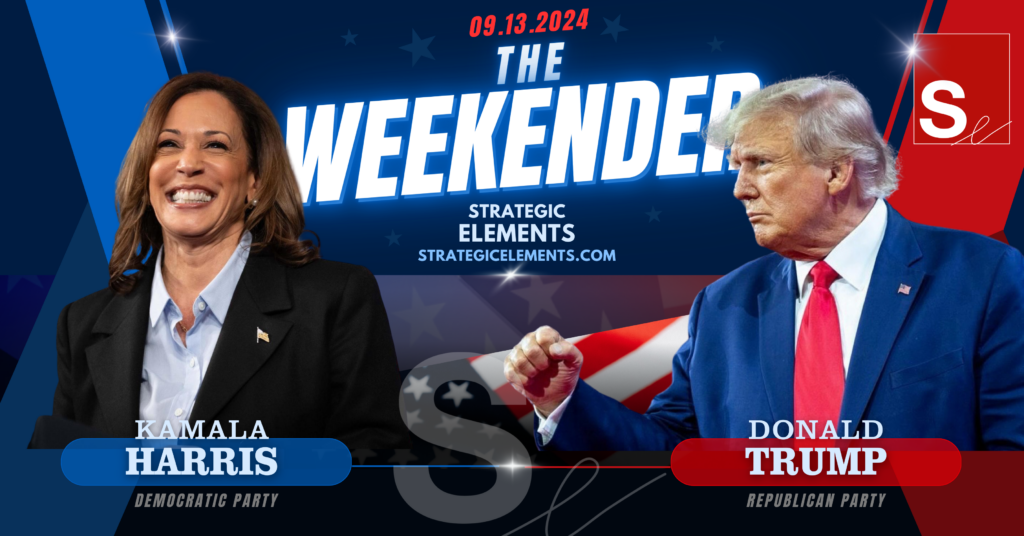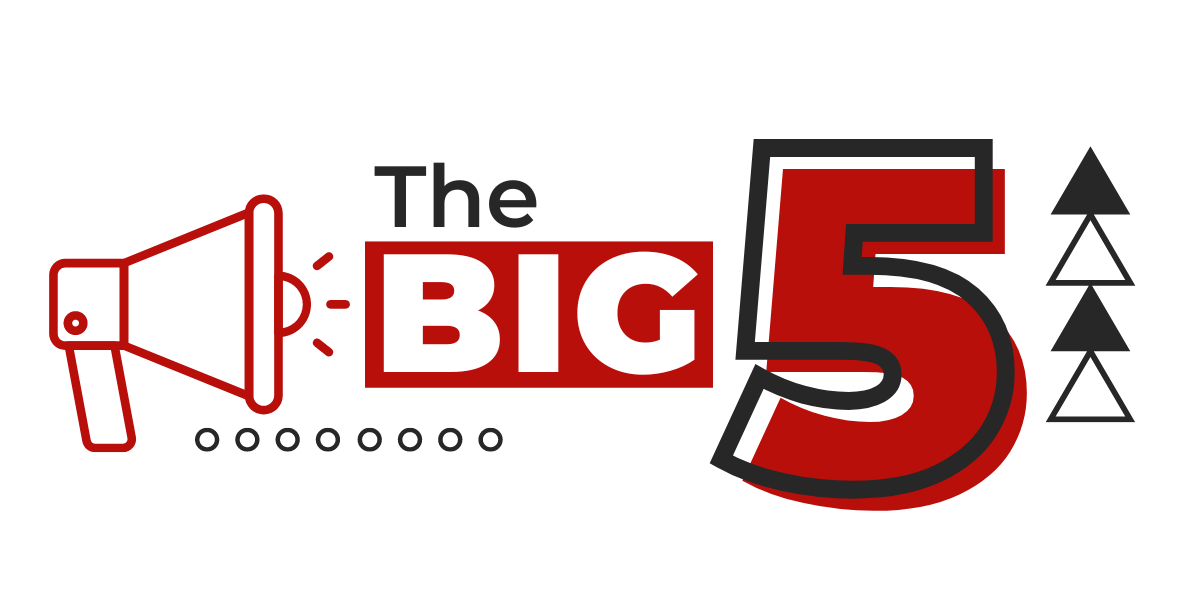DATA POINTS
18
The number of days until the vice-presidential debate (October 1 on CBS in New York City)
60+
The number of children of 9/11’s fallen who have been through the FDNY training academy and are now on the job as firefighters
105
The number of medals the United States took home at the 2024 Paralympics
217
The number of firehouses in the neighborhoods of New York, each of which holds a memorial for those killed at the World Trade Center 23 years ago
$80,610
The median household income earned in 2023 – up 4% from 2022
3.3 Million
The number of likes Taylor Swift’s endorsement of Kamala Harris received in one hour
A Predictable Debate
On Tuesday night, 57.5 million Americans tuned into the first debate between former President Donald Trump and Vice President Kamala Harris. The Philadelphia debate stage was the first time the two had met in person.
The 90-minute discussion was predictable. Harris landed some jabs, and her debate prep largely stuck – illustrated in the ways she checked herself on nonverbal reactions and delivered (perhaps overly rehearsed) emotional appeals. Trump sidestepped his advisors’ heeding to stay calm and on message, defaulting to name-calling and a defensive posture. Debate moderators stuck to their scripts, at times not allowing rebuttals and frequently fact-checking Trump, which has drawn scrutiny from Republican pundits like Megyn Kelly, who called it a “3-on-1″ debate.
But did the debate move the needle? A New York Times analysis with undecided voters shows that some need more convincing. Voters interviewed called the debate disappointing, confusing, and unsurprising. They said Trump was difficult to take seriously, and that Harris didn’t separate herself from Biden.
With the latest national polling illustrating a neck-and neck race (Harris 47, Trump 43), no one is picking out White House curtains yet. The candidates must convince middle America that they have a plan for critical issues like inflation, national security, and a stronger economy. With only 53 days until E-Day, there’s no time to lose.
 One Small Step for Billionaires, One Giant Leap for Capitalism
One Small Step for Billionaires, One Giant Leap for Capitalism
SpaceX has changed space travel by becoming the preeminent private company that sends crews into orbit around the Earth. On Tuesday, the company sent billionaire tech entrepreneur Jared Isaacman into space where he became the first private citizen to conduct a spacewalk. SpaceX did not settle for a low stake walk among the cosmos, however. The crew, which also includes two engineers and a former Air Force Thunderbirds pilot, ventured deeper into space than the International Space Station; they were 870 miles above our planet. This altitude surpassed the orbital record set by NASA’s Project Gemini in 1966. Only the 24 Apollo astronauts who flew to the moon have headed further than this expedition.
Spacewalks are regarded as one of the most dangerous aspects of space travel – where only a mere suit protects the walker from the harsh vacuum of space. Isaacman’s walk was brief – only 30 minutes – compared to the typical seven-hour walks regularly completed by astronauts onboard the ISS. This crew was also required to keep one hand on the ride at all times, unlike ISS astronauts who float in the dark via the safety of their tether. Isaacman joins an exclusive list of only 263 people who have completed a spacewalk, a phenomenon started by the Soviet Union’s Alexei Leonov in 1965.
Every new episode in space brings valuable data, tests, and information for the scientists back home to use. Now that SpaceX has proven their new spacesuit works like a gem, the company is one step closer to putting humans on Mars within the next four years.
Read More at the Associated Press
 Our Greatest Achievement at the Heaviest Cost
Our Greatest Achievement at the Heaviest Cost
ChatGPT is available for free for all, but AI is notoriously expensive to develop, maintain, and evolve. So how are companies like OpenAI paying their bills? They rely on their “business users” who pay a monthly fee to access the best features that generative tools have to offer. OpenAI alone has more than 1 million paying users – including heavy hitters like Moderna, Morgan Stanley, and Arizona State University. The company reels in an estimated $2 billion a year, but it does not appear to be enough as it spends tens of billions to train and deploy next generation models.
Although OpenAI has not publicly commented on price hikes (rumoring up to $2,000 a month), Google’s Gemini, Microsoft’s Copilot, and Anthropic’s Claude are looking to steal users and are all similarly priced to ChatGPT – around $20 a month. Technology continues to become more expensive to develop, but AI may generate its own solution to why it costs so much to train.
 Long-Awaited Good News on the Economy
Long-Awaited Good News on the Economy
Economic news since COVID-19 has been dire at best for American families; new data may shine a ray of hope. Household incomes rose last year for the first time since the pandemic, which suggests inflation is easing up and the job market is stronger. The U.S. Census Bureau released that median household income increased by 4%, from $77,540 in 2022 to $80,610 in 2023. White non-Hispanic households had a median income of $89,050 (+5.7%), Asian households had the highest median income at $112,800 (+/- 0%), Hispanic households at $65, 540 (+/- 0%), and Black households median income reached $56,490 (+2.8%).
It included mixed signals on poverty trends, however, and demonstrated that women saw smaller gains than men. Although families may not yet be feeling this positive impact as inflation reigns supreme, the Federal Reserve is still working to quell inflation by keeping interest rates high (while avoiding a recession). Still, millions of Americans are living below the poverty line. In 2023, the official U.S. poverty rate was 11.1%, meaning 36.8 million were below the threshold.
Read More at The Wall Street Journal
 The Lion Sleeps Tonight
The Lion Sleeps Tonight
Beloved and acclaimed actor James Earl Jones died at the age of 93 this past week. Jones’ deep, rich bass voice gave life to numerous performances that are hard to imagine being played by anyone else. He voices that titular villain Darth Vader in “Star Wars”, held gravitas as Mufasa in Disney’s 1994 masterpiece “The Lion King”, and played critical roles in “Dr. Strangelove,” “Great White Hope,” “Field of Dreams,” “The Sandlot,” “Conan the Barbarian” and many more. His storied career will not soon be forgotten having, earned himself Emmy, Grammy, Oscar, and Tony Awards.
Be sure to follow us on Facebook, Twitter, and LinkedIn for more news and industry updates. To receive a copy of The Weekender in your inbox, sign up here.










